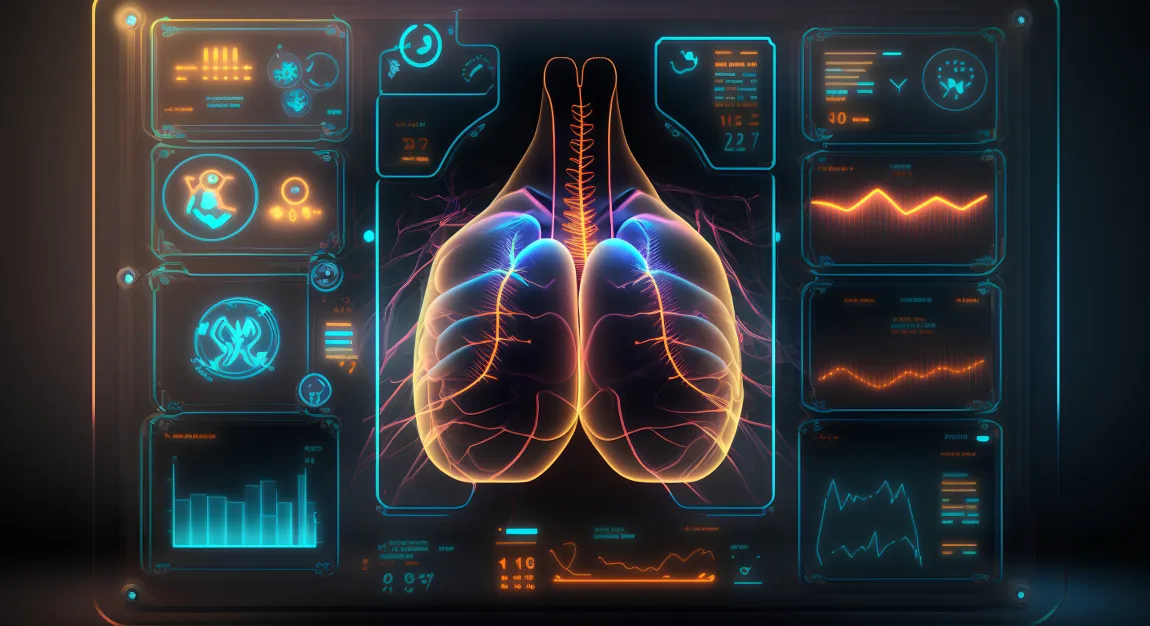- The lung cancer screening rate in the U.S. is extremely low ─ fewer than 6% of high-risk individuals undergo lung cancer screening nationally.
- Lack of awareness and accessibility are major barriers to lung cancer screenings.
- I founded the American Lung Cancer Screening Initiative to combat barriers and support advances in lung cancer screening, such as the use of AI.

Lung cancer is the deadliest cancer in the U.S. An estimated 127,070 Americans will die from lung cancer in 2023. Early detection of lung cancer through low-dose computed tomography (LDCT) screening has been shown to significantly reduce lung cancer mortality in high-risk populations and is currently recommended annually by the U.S.
Preventive Services Task Force (USPSTF) for individuals aged 50-80 years with a ≥20 pack-year smoking history and who currently smoke or have quit within the past 15 years.2 Two large-scale randomized trials—the National Lung Screening Trial (NLST)3 and the Nederlands–Leuvens Longkanker Screenings Onderzoek (NELSON) Trial4—have shown that LDCT screening can significantly reduce lung cancer mortality by 20-33%.3,4
However, the lung cancer screening rate in the U.S. is extremely low ─ fewer than 6% of high-risk individuals undergo lung cancer screening nationally.5 In comparison, the screening rates for breast and colorectal cancer are 75% and 67%, respectively.6 Furthermore, of those who do undergo a baseline LDCT screening, only 22% come back for their annual LDCT screening the following year.7
A major barrier to improving uptake of and adherence to lung cancer screening is the lack of awareness. A previous study found that 84% of those at high risk for lung cancer were not familiar with or had never heard of lung cancer screening.8
Because lack of awareness is such a major barrier, I started the American Lung Cancer Screening Initiative (ALCSI) in 2018 with Alexandra Potter (president) and Priyanka Senthil (executive director). Today, ALCSI has more than 45 chapters on college campuses across the country made up of more than 500 student volunteers.
Since its inception, ALCSI has held over 450 community events and educated 15,000+ community members about lung cancer screening. Currently, ALCSI is focusing awareness and education efforts on several ongoing lung cancer screening studies, including one on evaluating lung cancer screening among high-risk firefighters, another on evaluating lung cancer screening among Asian females who have never smoked, and a pilot prospective study evaluating the feasibility of lung cancer screening among high-risk Black women.
ALCSI also works with local and state leaders such as mayors, governors, state representatives, doctors, and patients, to film public service announcements about lung cancer screening and encourage constituents to get screened. We’ve produced more than 90 PSAs and counting.
ALCSI also works with mayors’ and governors’ offices to issue proclamations recognizing November as National Lung Cancer Awareness Month (410+). ALCSI also works with U.S. congress members and senators to draft and advocate the first-ever House and Senate resolutions recognizing the importance of early detection of lung cancer through screening. Notably, every year since December 2020, the U.S. Senate has passed Senate Resolutions S.Res.780, S.Res.462, and S.Res.863 with unanimous consent.
In addition to community education and awareness efforts, ALCSI supports advances in lung cancer screening, which likely will involve artificial intelligence (AI) and deep learning algorithms that can serve as adjuncts to LDCT screening. One such deep learning image analysis algorithm called Sybil9— developed by Drs. Lecia Sequist and Florian Fintelmann at Massachusetts General Hospital—analyzes baseline LDCT exams and predicts future lung cancer risk. When applied to a baseline LDCT scan, Sybil has been shown to predict 1- and 6-year lung cancer risk with high accuracy, achieving an area under the curve of 0.86-0.92 at 1-year and 0.74-0.81 at 6-years.9 Sybil generates lung cancer risk scores for each patient, which represent their cumulative lung cancer risk at different time points following the baseline LDCT scan.
Importantly, Sybil can identify individuals with a negative baseline LDCT exam but who have high lung cancer risk and may benefit from more intense surveillance, and who should receive an additional follow-up LDCT exam. AI models, such as Sybil, may allow for the expansion of an initial baseline LDCT scan to more individuals, including those who do not currently qualify for lung cancer screening under the 2021 USPSTF guideline (and thus are considered a 'lower-risk' population on average).
AI models may be able to identify a subset of high-risk individuals in this lower-risk population who would benefit from additional follow-up scans and could be particularly useful in expanding LDCT screening to high-risk women and racial minorities who may not qualify for screening. More research will be needed in this area prior to implementation on a national scale, but the future is promising and cutting-edge breakthroughs are anticipated in the coming decade.
References
1. Siegel RL, Miller KD, Wagle NS, Jemal A. Cancer statistics, 2023. CA Cancer J Clin. Jan 2023;73(1):17-48. doi:10.3322/caac.21763
2. Krist AH, Davidson KW, Mangione CM, et al. Screening for Lung Cancer: US Preventive Services Task Force Recommendation Statement. JAMA. Mar 09 2021;325(10):962-970. doi:10.1001/jama.2021.1117
3. Reduced Lung-Cancer Mortality with Low-Dose Computed Tomographic Screening. New England Journal of Medicine. 2011;365(5):395-409. doi:10.1056/NEJMoa1102873
4. de Koning HJ, van der Aalst CM, de Jong PA, et al. Reduced Lung-Cancer Mortality with Volume CT Screening in a Randomized Trial. New England Journal of Medicine. 2020;382(6):503-513. doi:10.1056/NEJMoa1911793
5. American Lung Association. "State of Lung Cancer," 2020.
6. Shapiro JA, Soman AV, Berkowitz Z, et al. Screening for Colorectal Cancer in the United States: Correlates and Time Trends by Type of Test. Cancer Epidemiol Biomarkers Prev. Aug 2021;30(8):1554-1565. doi:10.1158/1055-9965.EPI-20-1809
7. Silvestri GA, Goldman L, Burleson J, et al. Characteristics of Persons Screened for Lung Cancer in the United States. Annals of Internal Medicine. 2022;doi:10.7326/M22-1325
8. CHICAGO, IL | November 1. “New Study from American Lung Association's Lung Force Reveals Low Awareness of Lifesaving Lung Cancer Screening among Those at Greatest Risk.” American Lung Association.
9. Mikhael PG, Wohlwend J, Yala A, et al. Sybil: A Validated Deep Learning Model to Predict Future Lung Cancer Risk From a Single Low-Dose Chest Computed Tomography. Journal of Clinical Oncology. 2023/04/20 2023;41(12):2191-2200. doi:10.1200/JCO.22.01345
